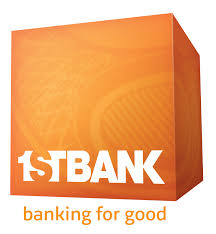
West Valley Hot Topics
August 28, 2024
Topic: Housing - Missing Middle
Lunch Sponsor

Speaker Bios

Jeanine Jerkovic, MSc, CEcD.
Economic Development Director
City of Surprise
Jeanine Jerkovic, CEcD has served as the Economic Development Director of the City of Surprise since 2014. As an economic development professional, Jeanine is most proud of starting up the West Valley’s first business incubator, the AZ TechCelerator, and recruiting Costco to the City of Surprise – which has helped launch an additional 700,000 square feet of retail and commercial development. She was named one of Arizona Business Magazine’s 2021 “Most Influential Women in Arizona” and recognized in 2019 as “Economic Developer of the Year” by the Arizona Association for Economic Development. Jeanine has a B.A. from Barrett, the Honors College at Arizona State University and has an MSc from the London School of Economics in the UK. Jeanine and her husband Velko and their two children live in Surprise, Arizona.

Suzanne Kinney
President & CEO
NAIOP Arizona
Suzanne Kinney is an experienced association manager and public policy professional. Since 2017, she has led the Arizona Chapter of NAIOP, the commercial real estate industry association. During her tenure, the Arizona Chapter has increased membership by around 30% to over 1,000 individuals and has won several national awards including NAIOP Chapter of the Year (2021), Most New Members out of all 53 chapters (2021), Best Government Relations Program (2020), and Best Membership Program (2019). She has been named a Real Estate Power Broker (2022 and 2023) and Woman Achiever (2022) by the Arizona Capitol Times. Suzanne was selected for the Phoenix Business Journal’s Forty-Under-40 Class of 2009. From 2014-2017, she operated Southwest Business Policy, a consultancy which provided public policy research and communications services for business, non-profit, and higher education clients.
For eight years, Suzanne was a member of the executive staff at the Arizona Chamber of Commerce and Industry serving as Senior Vice President of Public Policy. In 2008, she founded the Arizona Chamber Foundation, a research-based public policy institute. Earlier in her career, Suzanne was a Senior Research Analyst at Morrison Institute for Public Policy at Arizona State University. Suzanne received a Bachelor of Arts degree in Political Economy from Tulane University in New Orleans and a Master of Arts degree from the Committee on International Relations at the University of Chicago.

Nicole Newhouse
Executive Director
Arizona Housing Coalition
Nicole Newhouse is the Executive Director of the Arizona Housing Coalition, where she leads efforts to expand affordable housing and address homelessness across the state. With a strong background in nonprofit leadership, Nicole has been pivotal in advancing key housing policies, including the Arizona State Low-Income Housing Tax Credit program. Her commitment to mission-driven work and strategic collaboration has made her a leading voice in Arizona’s housing advocacy.

Greg Vogel
CEO
Land Advisors
Since founding the company in 1987, Greg has applied his unique knowledge in the areas of land economics, land use and market trends to become a trusted advisor to a broad spectrum of clients including financial institutions, investors, homebuilders and master-planned community developers.
As Chief Executive Officer of Land Advisors Organization, he has led the expansion of the company into 30 markets across the United States launching it to the largest land company in the US.. Over the past 36 years he has been involved in over 1,000 transactions including dozens of the highest valued land transactions in the country. He has developed an extreme level of expertise in large scale community development and the representation of large land owners in unique structured transactions.
Mr. Vogel received his B.S. in Real Estate from Arizona State University in 1985. Within the Urban Land Institute he has served over 25 years in many national and local leadership positions. Mr. Vogel focuses his philanthropic and civic involvement on the Arizona State University Real Estate Programs now Chairing the Real Estate Council and is a Board member of University Realty. He also serves on the board of Valley Partnership and is serving on the Valley Wise Hospital System current capital campaign.
Glossary of Terms
Affordable Housing: Housing is generally considered affordable when the total costs of residential occupancy (rent/mortgage, utilities, insurance, etc.) total less than 30% of a household’s income. “Affordable housing” also refers to multi-family developments financed with the support of governmental programs like the Low Income Housing Tax Credit (LIHTC) and Arizona’s state affordable housing tax credit. These communities offer below-market rents to income-qualifying households alongside a suite of supportive services. Usually the income limit to qualify to live in such a unit is 60% of AMI.
Area Median Income (AMI): The median income for a specific geographic area, used to determine eligibility for affordable housing programs. Affordable housing programs often target households earning a percentage of the AMI, such as 50% or 80% AMI. Area median income (AMI) in Maricopa County was around $100,000 in 2024. Affordable monthly housing costs for a household earning right at AMI total $2,500. How realistic is that in today’s economy?
Extremely low income households number 110,557 in the Phoenix metro area alone, 176,191 households statewide. Extremely low income households are those earning 30% AMI or less. That’s around $24,900/year -- “affordable housing” rates for this group would total $623/month.
State Affordable Housing Tax Credit: aka State LIHTC. A governmental financing tool to promote the development of affordable housing. The federal model called the Low Income Housing Tax Credit (LIHTC) as well as the 2021-created state affordable housing tax credit modeled after the federal program are responsible for the construction of more than 90% of all affordable housing units in the state.
The tax credit allows private developers to bid on tax credit funding – shifting the government’s risk burden to private firms while developing much-needed affordable units. The tax credits “come due” once the units are occupied and generating rental income, delaying the state investment typically 3+ fiscal budget years down the road.
Attainable Housing: Affordable housing has now been associated with subsidized housing as described above for lower-income households. Now “attainable housing” is often instead used to describe non-subsidized housing that can be afforded or attained by much of the population.
Missing Middle: Also referred to as medium-density housing. These building types, such as duplexes, fourplexes, cottage courts, and courtyard buildings, provide diverse housing options within “walkable” neighborhoods and support retail and public transportation options. They are referred to as “missing” because they have typically been illegal to build – essentially zoned out of existence - since the mid-1940s and “middle” because they sit in the middle of a spectrum between detached single-family homes and mid-rise to high-rise apartment buildings, as well as number of units and often, affordability.
Workforce Housing: A term for a mixed bag of housing that is gaining usage with the real estate industry, developers, and policy makers. Workforce housing can refer to any form of housing, including ownership of single or multi-family homes, as well as the occupation of rental units. Workforce housing is generally understood to mean housing that is affordable for households with earned income that is insufficient to secure quality housing in reasonable proximity to the household’s workplace(s). Housing that is affordable for middle-income workers, such as teachers, firefighters, and nurses, who may not qualify for traditional affordable housing programs but still face challenges finding affordable housing in high-cost areas. Recent Arizona examples (all school districts):
-Chino Valley
-Prescott
-Bullhead City
Housing Choice Vouchers: A federal program that provides rental assistance to low-income households, allowing them to rent housing in the private market. Tenants pay a portion of their income towards rent, with the voucher covering the rest.
Inclusionary Zoning: A policy that requires or encourages developers to include a certain percentage of affordable units in new or rehabilitated housing projects. In exchange, developers may receive incentives such as density bonuses or tax breaks.
Cost Burdened: A household is considered cost burdened when it spends more than 30% of its income on housing costs, making it difficult to afford other necessities like food, healthcare, and transportation.
Severely Cost Burdened: A household that spends more than 50% of its income on housing costs, significantly limiting their ability to cover other essential expenses
Fair Market Rent (FMR): An estimate of the amount needed to rent a moderately priced home in a given area, used by HUD to determine payment standards for housing assistance programs like Section 8.
Zoning: Local government regulations that dictate how land can be used in different areas, including residential, commercial, and industrial zoning. Zoning laws can impact the availability and affordability of housing.
Land Trust: A land trust is a legal entity, often a nonprofit organization, that holds and manages land or property for various purposes, such as conservation, preservation, or private ownership.
Community Land Trust: A Community Land Trust (CLT) is a type of nonprofit organization that acquires and holds land to benefit the community by providing affordable housing and preventing displacement.
